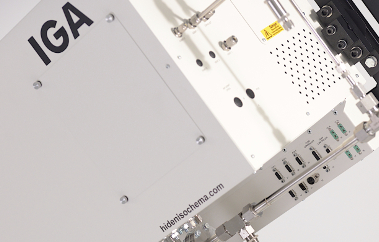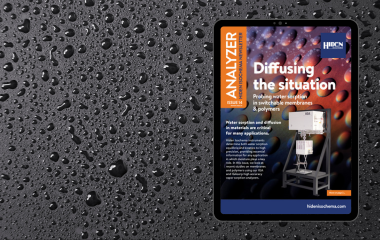In the Journal of the American Chemical Society, Stylianou et al have reported on the investigation of the structural transformation of a Zn-based flexible
Characterizing novel sorbents for removal of atmospheric pollutants with XEMIS
XEMIS analyzers’ unique capabilities to measure toxic and corrosive gas sorption were demonstrated in two recent publications from our customers at the University of Manchester, UK. The studies describe the synthesis and characterization of two novel metal-organic frameworks (MOFs) with the ability to selectively capture atmospheric pollutants.
In the first study, published in Nature Materials, the authors describe the reversible binding and separation of sulfur dioxide by a MOF[1]. Sulfur dioxide is a significant atmospheric pollutant, generated by fossil fuel combustion and detrimental to the environment and human health, yet is also an important chemical feedstock. Capturing SO2 using porous sorbents is an attractive process with both environmental and economic benefits, but the stability and reversibility of the sorbent is critical to the viability of the process. The MOF, MFM-170, selectively and reversibly adsorbs SO2 at record levels, and is stable to SO2 over multiple capture-release cycles with no loss of capacity. The XEMIS-001 was vital to characterization of the material, measuring high resolution SO2 adsorption-desorption isotherms at seven temperatures, and well as stability testing over 50 cycles of SO2 adsorption-desorption.
The second study, featured on the cover of the December 2019 issue of Nature Chemistry and also identified as a Research Highlight by Nature, describes the capture of nitrogen dioxide and its conversion to nitric acid by another MOF[2]. Nitrogen dioxide, NO2, is also a significant atmospheric pollutant and is highly reactive. Even trace levels of NO2 present a health concern and porous materials previously identified as stable sorbents for selective NO2 capture do not have sufficiently high adsorption capacity and selectivity at low pressures for practical application. The authors report a novel MOF, MFM-520, which has high adsorption capacity for NO2 even at pressures below 10 mbar, full reversibility, and stability to dry and humid NO2 over many cycles with no loss of adsorption capacity. The study also reports that the adsorbed NO2 molecules dimerise reversibly to N2O4 within the MOF’s pores, and demonstrates that the captured NO2 can be readily and completely converted to the valuable chemical nitric acid, HNO3, by treatment with water in air. The NO2 gas sorption measurements were performed using a XEMIS-001 and include high resolution adsorption-desorption isotherms and kinetic measurements, stability testing during 125 cycles of NO2 exposure, and determination of the isosteric enthalpy of adsorption from measurements at seven temperatures.

To learn more about XEMIS series gravimetric sorption analyzers and their application to toxic gas capture by porous materials, please contact our Sales and Application team via info@hidenisochema.com
References
[1] G. L. Smith el al, Nature Materials (2019) 18, 1358-1365. DOI: 10.1038/s41563-019-0495-0
[2] J. Li et al, Nature Chemistry (2019) 11, 1085-1090. DOI: 10.1038/s41557-019-0356-0


